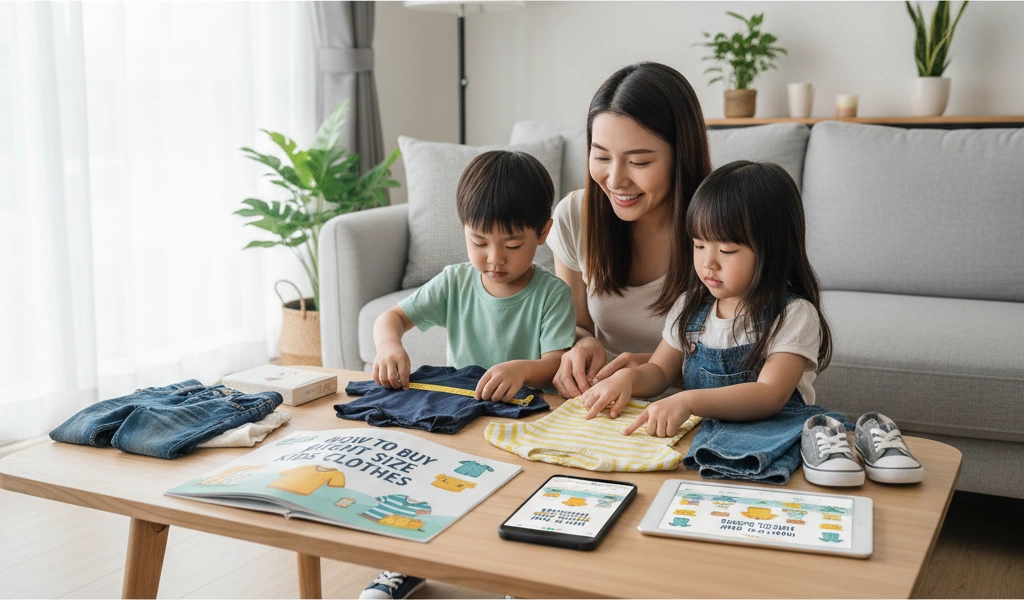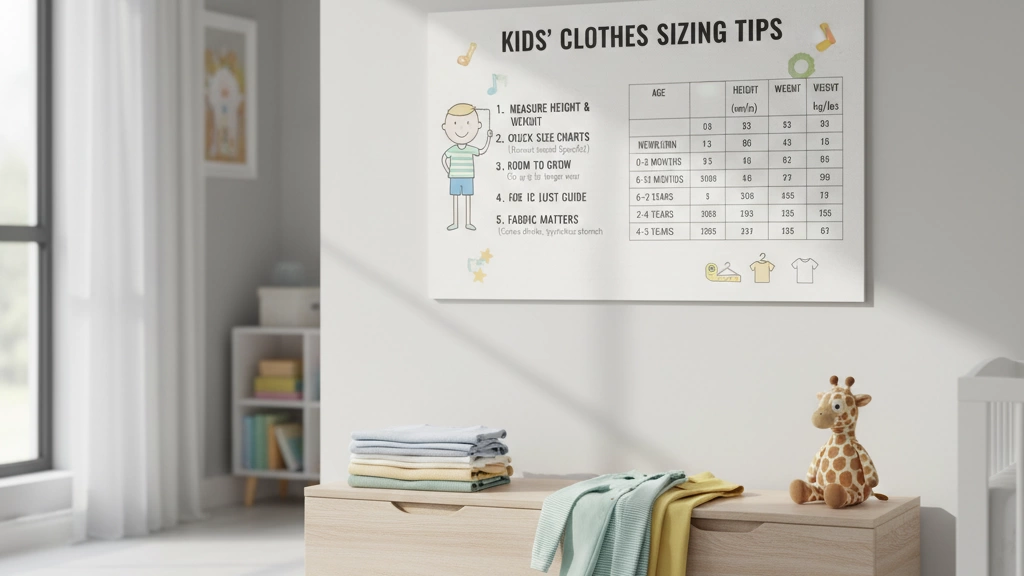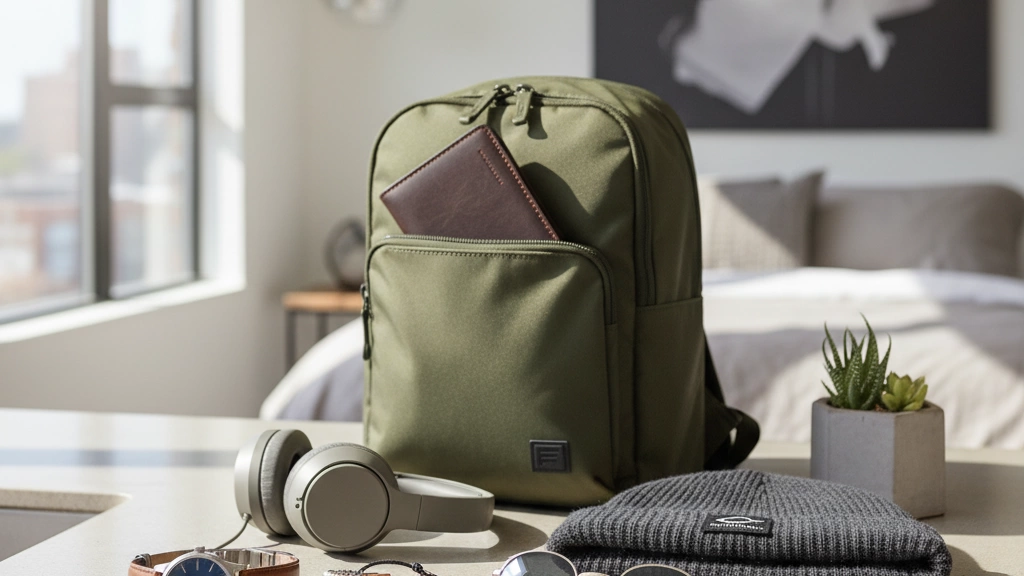Step 1: Take Accurate Body Measurements (The Foundation)
Buying the right size starts with measuring your child properly. Skip guessing—grab a flexible tape measure, a mirror, and a helper if you can. Here’s what you need to measure and how:
| Measurement | Where to Measure | Tip |
|---|---|---|
| Height | Top of head to floor, standing straight | Use a wall for accuracy |
| Chest | Around the fullest part, under the arms | Keep tape snug but not tight |
| Waist | Natural waistline, usually above belly button | Breathe normally |
| Hips | Around widest part of hips | Stand with feet together |
| Inseam | Top of inner thigh to ankle | Best measured on pants that fit well |
| Head (for hats) | Around widest part of head, just above ears | Use soft tape measure |
Age-Specific Measuring Tips
- Toddlers: Measuring a wiggly toddler? Try when they’re calm—maybe after a nap. Distraction helps (a favorite toy or video).
- Teens: Getting teens to stand still can be a challenge. Bribe them with snacks or explain you’re “helping them look sharp.” Use a helper to keep tape in place.
Bonus: Printable Measurement Chart
To keep these measurements handy or share with grandparents and babysitters, download our free printable kids’ measurement chart. It’s perfect to track growth and make online shopping a breeze.
Action Step: Measure today and fill in your free chart. This is your new sizing secret weapon!
Step 2: Understand How Kids’ Clothing Sizes Actually Work
Kids’ clothing sizes can be confusing because the size tag rarely matches your child’s exact age or measurements. For example, a \”5Y\” label doesn’t always mean it fits a typical 5-year-old. Age labels are just a general starting point, not a precise fit.
Sizing varies a lot across regions too. US, European, UK, and Asian sizes use different standards, so a size “5” in the US might be quite different from a European size 110 or UK size 4-5. Here’s a simple conversion table to keep handy:
| US Size | European | UK Size | Height (cm) |
|---|---|---|---|
| 4 | 104 | 3-4 | 102-108 cm |
| 5 | 110 | 4-5 | 109-115 cm |
| 6 | 116 | 5-6 | 116-122 cm |
Kids’ brands also use three main sizing types:
- Numeric sizes: like 4, 5, 6 (mostly for toddlers and young kids)
- Letter sizes: S, M, L (more common in older kids’ and teen clothing)
- Height-based sizes: 92 cm, 104 cm, etc., often in European brands
Another tricky part is vanity sizing in kids’ clothing. Some brands run noticeably big, while others tend to run small. For instance, brands like Cat & Jack (Target) often run larger, whereas Zara and H&M usually run smaller. Knowing this can save you from buying the wrong fit.
By understanding these differences, you’ll spot sizing patterns and choose the right clothes without the guesswork. For more on how different fabrics and fittings affect size, check out our detailed guide on understanding clothing types and fits.
Step 3: Master Any Size Chart (With Real Examples)
Understanding how to read kids clothing size charts can save you a lot of hassle. Each brand uses slightly different measurements, so knowing how to compare is key.
How to Read Brand-Specific Size Charts
- Look beyond the age label. Brands like Carter’s and Gap often list sizes by age, but check actual measurements too.
- Check height and weight ranges. Hanna Andersson, for example, focuses on height in centimeters, which helps when your child is on the taller or shorter side for their age.
- Pay attention to chest, waist, and hip dimensions. These measurements are critical for snug-fitting clothes, especially in brands like H&M and Zara.
Popular Brands Size Comparison (2024 Update)
| Brand | Runs | Size Type | Notes |
|---|---|---|---|
| Zara | Small | Numeric & Letter | Tight fit, size up recommended |
| H&M | Small | Numeric | Lean cuts, not roomy |
| Next Direct | Small | Numeric | Fits slender kids |
| Carter’s | True | Age/Numeric | Consistent, toddler-friendly |
| Old Navy | True | Age/Numeric | Reliable for casual wear |
| Gap | True | Age/Numeric | True to size with regular fits |
| Primary | True | Numeric & Height | Simple, true to size |
| Hanna Andersson | True | Height-based cm | Great for active kids |
| Cat & Jack | Big | Letter & Numeric | Runs large, room to grow |
| Gymboree | Big | Numeric | Generous sizing |
Red Flags on Size Charts to Avoid
- Unrealistic measurements: Sizes with chest or waist measurements that jump too much between ages.
- No height indication: Without height, it’s tougher to confirm the right fit, especially for tall or short kids.
- Only letter sizing without numeric guide: Brands that rely solely on S, M, L without actual measurements can be hit or miss.
Getting familiar with these differences helps you pick the best fit every time. For more on layering and styling kids’ clothes properly during changing seasons, check out our guide on mastering the art of layering.
Brand-by-Brand True-to-Size Guide (2024 Edition)
When buying kids’ clothes, knowing how each brand fits can save you from constant returns and sizing guesswork. Here’s a quick breakdown of popular kids’ brands and how they typically run in terms of size:
Runs small:
- Zara
- H&M
- Next Direct
These brands often fit slimmer or have shorter cuts, so consider sizing up if your child is between sizes.
True-to-size:
- Carter’s
- Old Navy
- Gap
- Primary
- Hanna Andersson
These brands usually stick to their size charts closely, making it easier to pick the right size with accurate measurements.
Runs big:
- Cat & Jack (Target)
- Gymboree
- Tea Collection
If your child is in between sizes or small for their age, these brands tend to have roomier fits, so sizing down might be needed.
Premium brands:
- Mini Boden
- Janie and Jack
- Burt’s Bees Baby
These tend to offer high-quality fabrics with fits that vary — some styles run true-to-size, others a bit narrow or tall, so always check the specific size chart.
Understanding these tendencies helps you pick smarter, whether shopping in-store or online. For example, if you’re eyeing a Zara jacket, it’s a good idea to size up to allow for layering or growth spurts.
By knowing which brands are generally small or big, you avoid the hassle of guessing, making your shopping experience smoother and your child’s clothes fit better every time.
Growth Spurts & When to Size Up (Age-by-Age Strategy)

Kids grow fast, but knowing when to size up can save you money and keep them comfortable.
- 0–24 months: It’s best to buy clothes that fit exactly or just one size up. Babies grow quickly but unevenly, so one size bigger allows for wiggle room without drowning them.
- 2–5 years: At this stage, buying 1 to 2 sizes up is smart for longevity. Toddlers and preschoolers have growth spurts, and sizing up means clothes last longer through these rapid phases.
- 6–12 years: Kids slow down a bit, so stick with their current size but consider brands with adjustable waists or stretch fabrics for a better fit as they grow.
Average Growth Chart (Height & Weight by Age)
| Age | Avg. Height (cm) | Avg. Weight (kg) | Sizing Tip |
|---|---|---|---|
| 0–12 months | 50–75 | 3.5–10 | Buy close to measurements, +1 size |
| 1–2 years | 75–90 | 10–13 | 1 size up for comfort |
| 2–5 years | 90–110 | 13–20 | 1–2 sizes up for growth phases |
| 6–8 years | 110–130 | 20–30 | Current size + adjustable features |
| 9–12 years | 130–150 | 30–45 | Same as above |
Adding a +1 year buffer when buying clothes for fast-growing kids helps avoid too-short sleeves or pants after just a few weeks.
Keep an eye on growth patterns—we all know some kids shoot up nearly overnight! With this age-by-age guide, you’ll better judge when to size up and avoid common sizing mistakes.
For more on keeping kids comfortable through regular sizing adjustments, check out tips on how to measure your child for clothes and kids clothes sizing tips for parents, making shopping smoother every season.
Seasonal & Category-Specific Sizing Tips

When buying kids’ clothes, sizing can vary a lot depending on the category and season. Here’s how to get it right every time:
- Pajamas & Onesies: Always size up here. Kids grow fast, and they need room to move comfortably, especially with layers underneath during cooler months. Plus, a little extra room makes bedtime comfier.
- Outerwear & Snowsuits: Plan for layering—choose sizes with extra space so your child can wear sweaters or thermals inside. This keeps them warm without the jacket feeling too tight or restrictive.
- Shoes & Socks: Follow the half-size rule. Kids’ feet grow quickly, so buying shoes about half a size larger than their current foot length gives room to grow without slipping. For socks, consider stretchy or adjustable styles to fit longer.
- Swimsuits, Dancewear & School Uniforms: These tend to run true to size but check for brand specifics. For swimsuits and dancewear, a snug but comfortable fit is key, while uniforms might come with adjustable waists—great for growing kids.
Taking these category-specific sizing tips into account helps ensure your child is comfortable and looks great all year round. For kids’ socks styling tips to match their outfits, don’t miss our detailed guide on how to coordinate your socks with your entire outfit.
Online Shopping Hacks to Get It Right the First Time
Buying kids’ clothes online can save time but getting the right size the first time takes some smart moves:
- Read reviews carefully: Look for phrases like “runs small,” “fits large,” or “true to size” in customer feedback. These tips are gold for sizing expectations.
- Use fit predictor tools: Many brands now offer size recommendation features based on your child’s measurements or even similar customer fits. Always try these before ordering.
- Best time to measure: Kids tend to be slightly taller and fuller in the evening, so measure after their day is done for the most accurate fit.
- Check the return policy: Before you buy, make sure returns or exchanges are hassle-free. Keep an eye on time limits and whether free returns are offered.
With these simple online shopping hacks, you can cut down on guesswork and avoid the hassle of returns, ensuring your child gets clothes that fit comfortably from the start.
In-Store Shopping Quick Checklist
When shopping for kids’ clothes in-store, bringing your child along is your best bet to get the right fit. The best times to shop are when your child is calm and cooperative, usually mid-morning or early afternoon.
Here’s a quick checklist to make your trip efficient:
- Bring your child to try clothes on for a real feel and fit.
- Always try the current size and one size up to gauge growth room.
- Do quick fit checks:
- Sleeve length: Should hit just past the wrist without bunching.
- Crotch fit: Pants shouldn’t be tight or sag too much.
- Shoulder width: Seams should sit right at the shoulder edge.
These quick tests can be done in about 30 seconds per outfit, saving time and frustration. Keeping this checklist handy means less guesswork and more confidence that you’re buying the right size.
For more detailed size guidance, check out tips on how to stop your tie from bloating — it’s a surprisingly handy resource for all kinds of fitting tricks!
Common Sizing Mistakes Parents Make (& How to Avoid Them)

When buying kids’ clothes, parents often slip up on sizing. Here are the biggest mistakes and how to avoid them:
- Relying Only on Age: Kids grow at different rates, so don\’t buy clothes just based on the age label. Always check actual measurements instead of assuming a “5Y” fits every 5-year-old.
- Ignoring Weight vs Height Ratio: Two kids can be the same height but have very different builds. Consider both weight and height when selecting sizes, especially for pants and fitted tops.
- Forgetting Shrinkage: Many parents overlook that 100% cotton clothes can shrink after washing. Blends usually hold their size better. Buying clothes slightly bigger or pre-washed items can save frustration.
Avoiding these mistakes helps you pick the right size and saves time on returns or uncomfortable fits. For more sizing tips, it’s also smart to think about fabric type and brand-specific quirks before purchasing.
Free Tools & Resources
To make buying the right size clothes for kids easier, take advantage of these free tools designed just for parents:
-
Downloadable Kids Measurement Tracker
Keep all your child’s measurements in one place with a handy printable chart. This tracker helps you note height, chest, waist, hips, inseam, and even head circumference for hats. It’s perfect for quick reference whether shopping online or in-store.
-
Universal Size Conversion Printable
Confused by the differences between US, European, UK, and Asian sizing? This simple printable conversion chart lets you match sizes across regions effortlessly, so you always pick the right fit.
-
Brand Sizing Google Sheet
Stay organized with an interactive sizing chart comparing popular kids’ brands. Updated for 2024, it highlights which brands run small, true-to-size, or large, helping you make informed choices every time.
Using these resources alongside your child’s measurements will save time and hassle, and help avoid costly returns.
For more on sizing tips and style advice, you can also visit this detailed guide to men’s shirts to understand how precise measurements play a big part across all wardrobes.
FAQ Section: Common Questions on Kids Clothing Sizes
How much bigger should I buy kids clothes?
It depends on your child’s age and growth phase. For babies up to 24 months, buying the exact size or just one size bigger is usually best. For toddlers (2–5 years), it’s smart to pick 1–2 sizes up to keep clothes wearable through growth spurts. Older kids (6–12 years) may need current size plus adjustable waists or just the next size, depending on their growth pattern.
Is a 5T the same as a size 5?
No, these aren’t interchangeable. A 5T (toddler size) is designed for younger children who are still potty training and usually has roomier crotch areas for diapers or training pants. A size 5 is typically for children who have outgrown toddler-specific features and is slimmer with longer proportions.
Which brands run big for toddlers?
Brands like Cat & Jack (Target), Gymboree, and Tea Collection often run bigger, giving extra room for growth. If you prefer fitted clothes, be cautious and check their size charts carefully. On the other hand, Zara and H&M tend to run smaller, so sizing up may be necessary there.
How often should I measure my child?
Kids grow fast! Measuring every 2–3 months is a good rule, especially for toddlers and early school-age children. For newborns and infants, monthly checks help ensure clothes aren’t too tight or uncomfortable. Keeping a printable kids measurement chart handy makes tracking easier.
European vs US kids clothing sizes chart — what’s the difference?
European sizes are usually based on height in centimeters (e.g., 92 cm, 104 cm), whereas US sizes use a mix of age labels (4T, 5, 6) and numeric sizing. UK and Asian sizing add their own variations. Having a reliable European to US kids size conversion chart helps, especially when shopping internationally or online. For example, a European size 98 roughly equals a US size 3T–4T.
For a detailed look at brand-specific size charts and how they compare, check out our updated size guide, which covers the top kids clothing brands with clear measurements and fitting tips.



